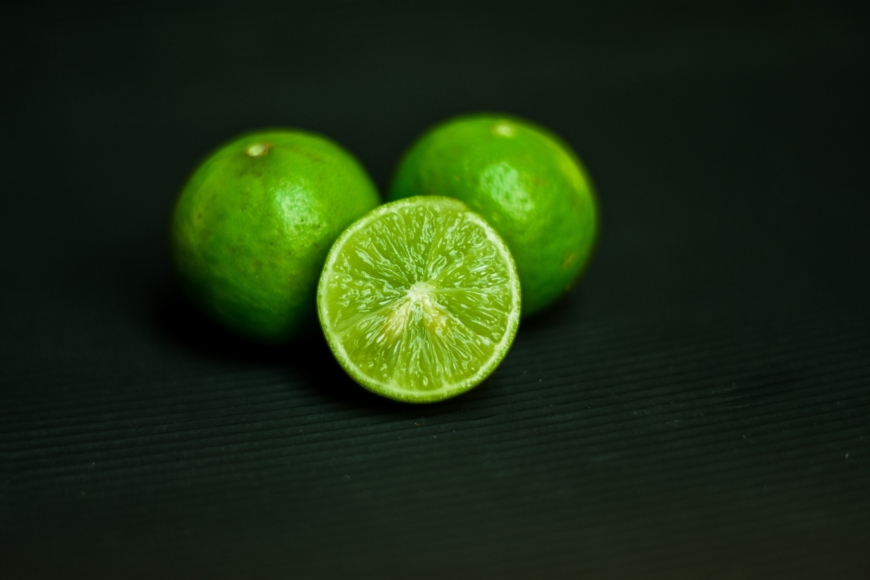Cooking and baking should be easy: find a recipe, follow it, and end up with a delicious dish. Even someone new to the kitchen should be able to figure it out— that is, unless they come across a recipe with vague measurements. “A pinch of nutmeg.” “A handful of chocolate chips.” Or worst of all… “the juice from one lime.”
 Pinterest
Photo by fernandozhiminaicela
Pinterest
Photo by fernandozhiminaicela
As a general rule, you can take more liberties with cooking than with baking, since baking is a science and you have to follow the directions exactly. But vaguely asking for the juice from one lime can cause problems in a cooking dish too, because you don’t know exactly how much liquid you’re adding. This is not to mention that limes hold a very strong flavor that can easily overwhelm a dish.
This begs the question: how much juice is in a lime? This can be a difficult question to answer because not all limes are the same. They come in different sizes and different stages of ripeness, both of which affect the amount of juice the lime is holding. You want to make sure you’re choosing your limes correctly.
How to Choose a Lime
Limes come in pretty consistent sizes, so you don’t need to worry about the size of the lime you choose for juicing; they come fairly standard. What you do need to pay attention to is the freshness and ripeness of the fruit.
Before buying a lime, give it a good squeeze. A fresh lime will feel tight and firm. This may feel counterintuitive, perhaps because some produce, for example avocados, aren’t ripe until they’re somewhat soft. When choosing limes, compare it more to an apple— a squishy apple isn’t a fresh apple. Find firm limes because those will be filled with the most juice. The soft ones will be old and dry inside.
How to Juice a Lime
Now that you’ve chosen the freshest, juiciest limes, you want to juice them properly to make sure you’re getting all the liquid out. There are a few ways to do this. You can use a citrus press, a hand juicer, or if you don’t have any equipment for the task, simply use your bare hands.
Before you begin, roll the lime around on the counter for a minute, using a massaging motion with your palm. This will loosen up the individual pieces inside and make it easier to juice. Then, slice the lime in half and using your press or juicer, squeeze the juice into a bowl. If you aren’t using a press or a juicer, sticking a spoon or fork into the middle of the pulp and twisting it will help you extract more juice.
Once you’ve juiced the lime, you may want to use a strainer or slotted spoon to remove any seeds or pulp.
So How Much Juice is in One Lime?
If you’ve squeezed your limes efficiently, you can expect to get 2 tablespoons of juice per unit of fruit. That’s 1 fluid ounce. Again, limes are pretty consistent in size so as long as you’re choosing fresh limes (remember, the tight and firm ones) 2 tablespoons should be the standard amount of juice you get from a lime.
If you’re worried the citrus flavor will overwhelm your dish, start with one tablespoon, or half a lime’s worth, and add more if necessary. Remember, you can always add more but you can’t wake it away once it’s in there. Baked goods often need more flavor than expected, so if a citrusy dessert recipe calls for the juice of one lime, you might need the entire two tablespoons to really brighten the taste.
This measurement comes in handy if you don’t have access to fresh limes and have to use bottled lime juice. Fresh fruit and ingredients are always optimal, but in a pinch, a couple tablespoons of bottled lime juice will work just fine.
What’s the Deal with Zest?
Sometimes a recipe will call for both the juice and the zest of a lime. The zest is the outer layer of green skin on a lime’s peel. When you add lime juice to a recipe, you’re adding the lime taste, plus the sourness and acidity. If you were cooking something with dairy ingredients, the acidity in the lime juice could curdle the dairy. In these instances, lime zest will provide the fresh, citrus flavor without the sourness or acidity.
To get the zest of the lime, use a microplane grater or zester to shave the outer layer of skin off the fruit. You don’t want grate too far into the skin because the flavor will become bitter. Stop grating before you get to the white layer of the lime’s skin. You can expect to render about ¼ of a teaspoon of zest.
Lime is a healthy and bright addition to food and drink, so don’t be afraid of using it to kick up your flavor.




Thank you! This is so helpful. I never know how much to add when the recipe doesn’t tell me exactly what to do! “Salt and pepper to taste” is the worst.